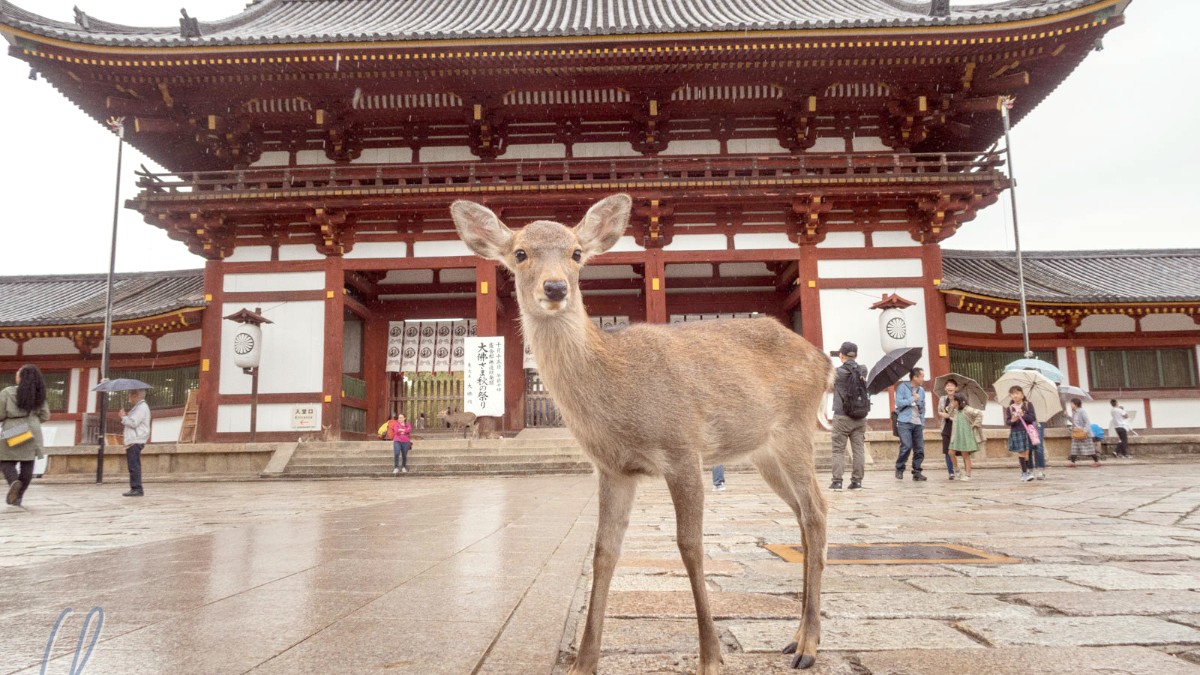
Kansai, Japan
These locations shape Nara's landscape and historical narrative.
They encompass UNESCO World Heritage sites and natural wonders.
Consider a combined ticket for certain temples for cost effectiveness.
An 8th-century Shinto shrine and UNESCO World Heritage site.
Known for thousands of bronze and stone lanterns, donated by worshippers.
Visit during Setsubun Mantoro (February) or Obon Mantoro (August) for lit lanterns.
Explore the botanical garden and the primeval forest on the grounds.
Tickets and tours can be found on GetYourGuide.
Nara's museums preserve and display its rich heritage.
Focuses on Buddhist art and archaeological artifacts from Nara's temples.
Features Buddhist sculptures, paintings, and ceremonial objects.
Open 9:30 AM to 5:00 PM (last entry 4:30 PM), closed Mondays. Admission fees vary.
Houses significant Buddhist sculptures and treasures from Kofuku-ji Temple.
Includes the famous Ashura statue.
Open 9:00 AM to 5:00 PM. An admission fee applies.
Served as the former family temple of the powerful Fujiwara clan. An UNESCO World Heritage site with a five-story pagoda, Japan's second tallest.
A large park in central Nara, home to over 1,200 wild sika deer, seen as messengers of the gods. Free entry, open 24/7.
Isui-en Garden and Yoshikien Garden offer beautiful traditional Japanese landscapes for serene strolls. Yoshikien is frequently free for foreign visitors.
Explore Nara's past through its ancient ruins and preserved districts.
Nara presents green spaces and scenic views for outdoor enjoyment.
These spots offer a serene escape within and around the city.
A grass-covered mountain with panoramic views of Nara city. Known for the Yamayaki (grass burning) festival in January.
Beyond cultural sites, Nara Park deer roam freely. They are an unique interaction opportunity within the city's green heart.
Various ponds and small streams are present throughout Nara Park, enhancing the peaceful natural setting.
A UNESCO World Heritage site and one of Nara's oldest temples, originally part of Asuka-dera Temple. A quieter, more intimate atmosphere.
Book unique temple tours on GetYourGuideKnown for its National Treasure main hall and impressive clay statues of the Twelve Heavenly Generals. A peaceful and artistic experience.
Explore cultural tours on GetYourGuideFocuses on art linked to Nara, including historical paintings and modern art. A different perspective on the region's artistic heritage.
Find museum passes on GetYourGuideFounded by Chinese monk Ganjin in 759, an UNESCO World Heritage site noted for its classical Nara-period architecture. A serene spot for reflection.
Discover temple experiences on GetYourGuideAnother UNESCO World Heritage site, one of Nara's oldest temples. Renowned for its East Pagoda and Yakushi Nyorai (Medicine Buddha) triad.
Explore historical site tours on GetYourGuideThe wild sika deer of Nara Park are a famous attraction. They interact closely with visitors.
Deer frequently bow for crackers. They are wild animals and their behavior is unpredictable.
Purchase the Nara Kotsu Bus One-Day Pass if your itinerary includes visits to attractions spread across the city.
This pass saves money and streamlines your travel.
Expand your Nara journey by exploring the surrounding Kansai region. Many world-class destinations are within easy reach.
Explore popular and culturally rich locations close to Nara.
Japan's efficient rail network makes independent travel easy and flexible.
Discover natural beauty beyond Nara's city limits.
Expect large crowds from early to mid-April during cherry blossom season.
Deepen your historical and spiritual journey through nearby sites.
Mount Yoshino also serves as a significant pilgrimage site for Shugendo, a form of mountain asceticism.
Consider extending your trip for a more comprehensive regional experience.
Japan's extensive rail network provides easy access to all these destinations.
Evaluate if a Japan Rail Pass offers better value than individual tickets for your specific itinerary.
Allow for flexibility to account for unexpected discoveries or changes in plans.
Secure lodging in popular cities like Kyoto and Osaka well in advance, especially during peak travel times.